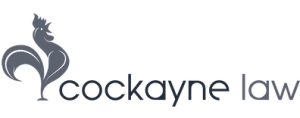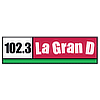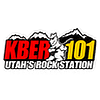Talking to Insurance Adjusters After a Utah Crash: A Lawyer’s Guide
After a Utah crash, stick to facts, not guesses. You can refuse a recorded statement to the other insurer, use your PIP benefits first, and send bills to your own carrier. Keep a pain log, save proof, and call a lawyer early.
If an adjuster is calling, you already have a lot on your plate. Your car needs work. Your body hurts. Bills start to arrive. The words you choose in these first calls can change your claim. This guide explains how to talk with adjusters in easy-to-understand language, how Utah’s rules affect you, and what to say when you feel pressed. You will learn the basics of Utah no fault coverage, deadlines that matter, and simple scripts that calm hard calls.
If you want hands-on help from a personal injury attorney Utah, you will also see how a lawyer takes over these talks so you can focus on healing.
Key Points You Should Know
- Keep answers short and only about facts
- Do not guess or accept blame
- You can refuse recorded statements
- Send bills to your own PIP first
- Utah uses a 50% fault bar
- Watch the four-year injury deadline
- Photos and medical notes raise value
- Never sign broad medical releases
- Track symptoms and missed work
- Get legal help before big decisions
What does an insurance adjuster really do after a crash?
Adjusters are trained to gather facts, judge fault, and set a dollar value on losses. They read the police report, talk to drivers and witnesses, and check vehicle damage. Their job is to settle claims for the company. That means they look for clear facts, and they also look for reasons to pay less. Knowing this keeps your calls calm and focused.
What do they listen for?
Adjusters listen for statements about speed, distraction, past injuries, or gaps in care. A casual “I’m fine” can be employed to refute the notion that you sustained an injury. A guess like “I might have looked away” can shift the fault. Share only what you know for sure. If you do not know, say, “I am still gathering information.”
Your rights in the call
You must be honest, but you do not have to guess. You can offer a summary, provide the claim number, and confirm where the car is. You can also decline a recorded statement to the other driver’s insurer and suggest emailing facts like the repair shop or treating clinic. Utah is a one-party consent state, but you still choose whether to be recorded by the other insurer. Keep it short, keep it true, and keep notes after every call.
Your first calls after a crash: words that protect you
Call your own insurer and use PIP first
Utah is a no fault state for medical bills at the start. Your policy includes personal injury protection, often called PIP. It pays at least the first $3,000 of reasonable medical costs, plus limited wage loss and household help. Report the crash to your insurer and send your bills there first. This keeps treatment moving.
Simple script for the other insurer
You can be polite and brief.
- “I can confirm my name, date, and location.”
- “I am getting medical care and will share records later.”
- “I am not giving a recorded statement at this time.”
- “Please email your questions so I can answer carefully.”
Do not do these in that first week
Do not guess about speed. Do not say you are fine if you are hurt. Do not share social media posts about the crash. Do not accept a quick check without knowing your full medical picture. A short call protects you more than a long one. If you want backup, a personal injury lawyer Utah can take these calls for you.
Recorded statements and blanket medical releases: set clear boundaries
Recorded statements
You must cooperate with your own insurer under your policy, which can include a recorded statement. You are not required to give a recorded statement to the at-fault driver’s insurer. If asked, you can refuse calmly and say you will share written facts after you speak with counsel.
Medical releases
Insurers often send broad medical release forms. Do not sign a release that lets them pull years of unrelated records. It is fair for them to see the bills and notes related to the crash. Ask for a limited release that covers only the injury and only from the date of the crash forward. This keeps the talk about today’s injuries, not old issues.
Why does this matter?
A recorded statement can lock you into early guesses before your doctor has a full picture. A broad release can lead to arguments about old aches that have nothing to do with the wreck. If you are in an uncertain condition, pause and speak with a lawyer first.
Utah rules that shape your claim
No fault basics, and when you can step outside
Utah’s no fault system uses PIP to pay for early medical care. The law sets minimum benefits. These benefits include at least $3,000 for medical bills, wage loss up to the lesser of $250 per week or 85 percent for 52 weeks, household services up to $20 per day, and a funeral up to $1,500 plus a $3,000 death benefit.
You can also bring a claim against the at-fault driver for pain and suffering when your medical bills reach at least $3,000. Or when injuries meet listed serious injury thresholds, such as permanent disfigurement or a fractured bone.
Fault rule
In Utah, a modified comparative fault rule is applied to all residents. You can recover if you are at fault for 49% or less. If you reach 50%, you will be unable to seek compensation for your injuries from the other party. Your payout is lowered by your share of the fault.
Deadlines
In the majority of injury cases, the statute of limitations for filing a lawsuit is four years. Claims for property damage frequently have a three-year time limit. Claims that involve a state or local agency have special rules. A notice of claim must be filed within one year, so act fast if a city truck or school bus was involved.
Low offers, delays, and how to push back
Spot the common tactics
Early low checks. Requests for old records. Gaps in contact. These slow your claim and lower the offer. Do not take the first number if your care is not done. Wait until you understand your diagnosis, bills, and whether you will require future care.
Build leverage with proof
Keep a running folder that holds the police report, photos from the scene, body shop estimates, medical notes, bills, and a simple pain and activity log. Save pay stubs and letters from work that show missed time. Solid proof is how fair offers happen.
Talk about money in a clear way
When you are ready, send a written demand with a clean list of losses. If you meet Utah’s threshold, you are permitted to include medical expenses, estimated future care, lost wages, property damage, and pain and suffering.
Explain the fault facts in short bullets. Give a reply date. Stay polite. If the response is a stall or a small bump, consider bringing in a personal injury attorney in Utah who knows the local carriers and courts. They can push for mediation or file suit before the deadline.
Hire the Best Personal Injury Lawyer in Utah
After a wreck, your energy should go to your health, not to tense calls with an insurer. That is where Chris Cockayne and the team at Cockayne Law come in. They deal with adjusters every day. They set clear ground rules, gather key proof, and build a claim that shows the full harm.
Here’s what process they follow in practice. They start with a free case review and map out the next steps. They open claims with every insurer that may pay. They route bills to PIP so treatment stays on track. They order the police report, body cam if needed, and scene photos.
They get written opinions from your doctor about diagnosis, limits, and future care when it is time. If fault is disputed, they pull phone records, video, or hire a reconstruction expert when justified. When an offer is light, they negotiate with facts, not noise.
If you want a steady hand from a personal injury lawyer in Utah, Cockayne Law can step in, so calls go to them, not to you. Their goal is simple. Protect your rights, get fair money on the table, and let you focus on getting better.
Conclusion
You do not need to outtalk an adjuster. You need to protect yourself. Keep your answers short and true. Use PIP for early care. Say no to broad releases and to recorded statements with the other insurer. Watch Utah’s faults and time rules.
When the paperwork and calls feel heavy, let a lawyer carry that load. Whether you handle it alone or with help, steady steps and good records make the biggest difference. If you want backup, Chris Cockayne and Cockayne Law are ready to step in.
FAQs
What does Utah’s no fault PIP pay for?
At least $3,000 in medical bills, limited wage loss up to the lesser of $250 per week or 85 percent for 52 weeks, household services up to $20 per day, and a funeral up to $1,500 plus a $3,000 death benefit.
When can I seek pain and suffering in Utah?
You can pursue it when your medical bills reach at least $3,000 or you suffer a listed serious injury like a fractured bone, permanent disfigurement, or other serious harm. Then you can seek it from the at-fault driver.
Do I need to see a doctor if the pain is mild?
Yes. See a doctor and follow the plan. Early notes link your pain to the crash. Gaps in care give the insurer a reason to argue your injuries came later.
When should I call a lawyer?
Call early if injuries are more than minor, if fault is disputed, or if a quick offer arrives. A personal injury attorney in Utah can deal with adjusters, protect deadlines, and work to raise the final number.









